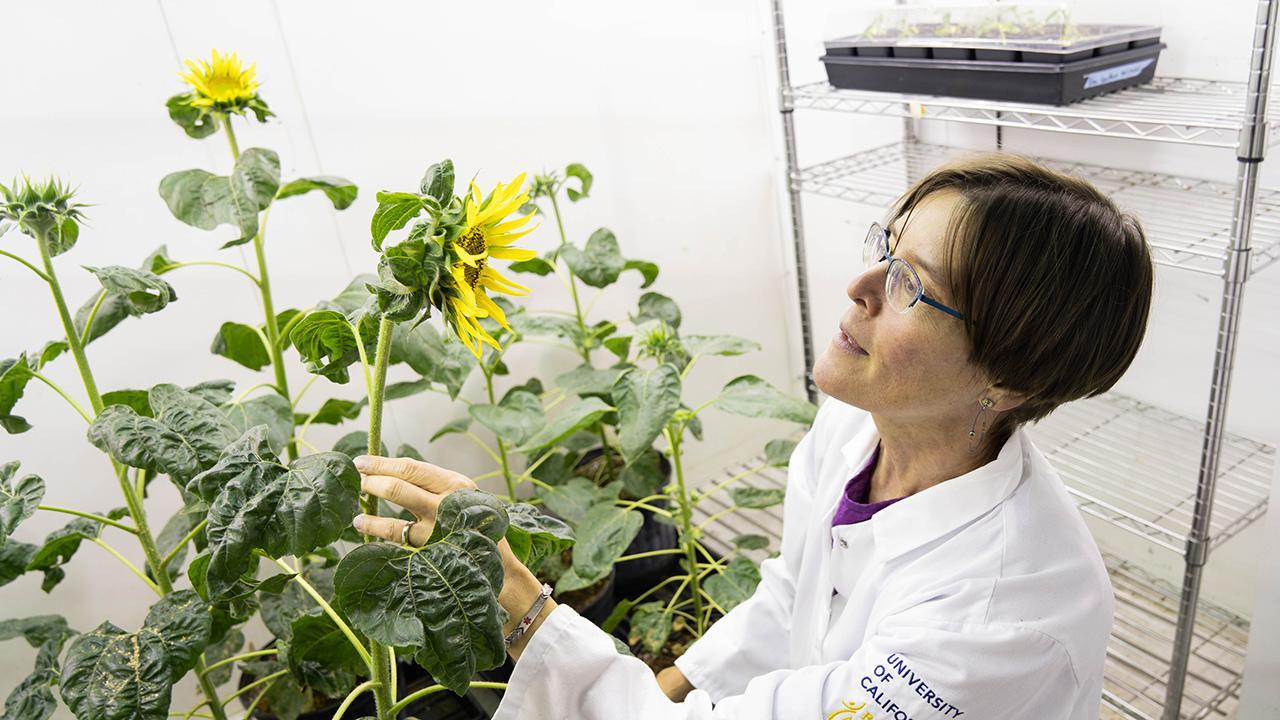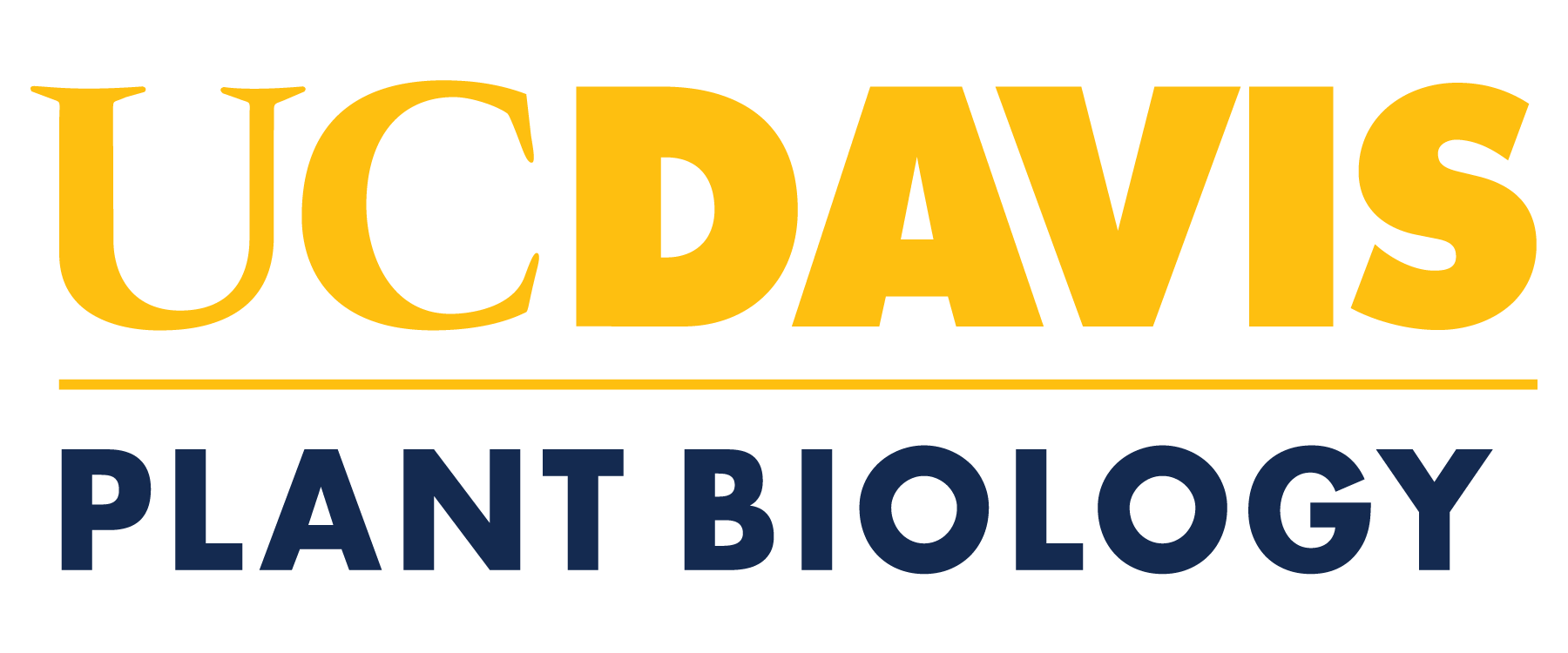
How Sunflowers See the Sun
Sunflowers famously turn their faces to follow the sun as it crosses the sky. But how do sunflowers “see” the sun to follow it? New work from plant biologists at the University of California, Davis, published Oct. 31 in PLOS Biology, shows that they use a different, novel mechanism from that previously thought.
“This was a total surprise for us,” said Stacey Harmer, professor of plant biology at UC Davis and senior author on the paper.
Sunflowers swing their heads by growing a little more on the east side of the stem – pushing the head west – during the day and a little more on the west side at night, so the head swings back toward the east. Harmer’s lab at the UC Davis College of Biological Sciences has previously shown how sunflowers use their internal circadian clock to anticipate the sunrise, and to coordinate the opening of florets with the appearance of pollinating insects in the morning.
In the new study, graduate student Christopher Brooks, postdoctoral researcher Hagatop Atamian and Harmer looked at which genes were switched on (transcribed) in sunflowers grown indoors in laboratory growth chambers, and in sunflowers growing in sunlight outdoors.
Read the full story here.
